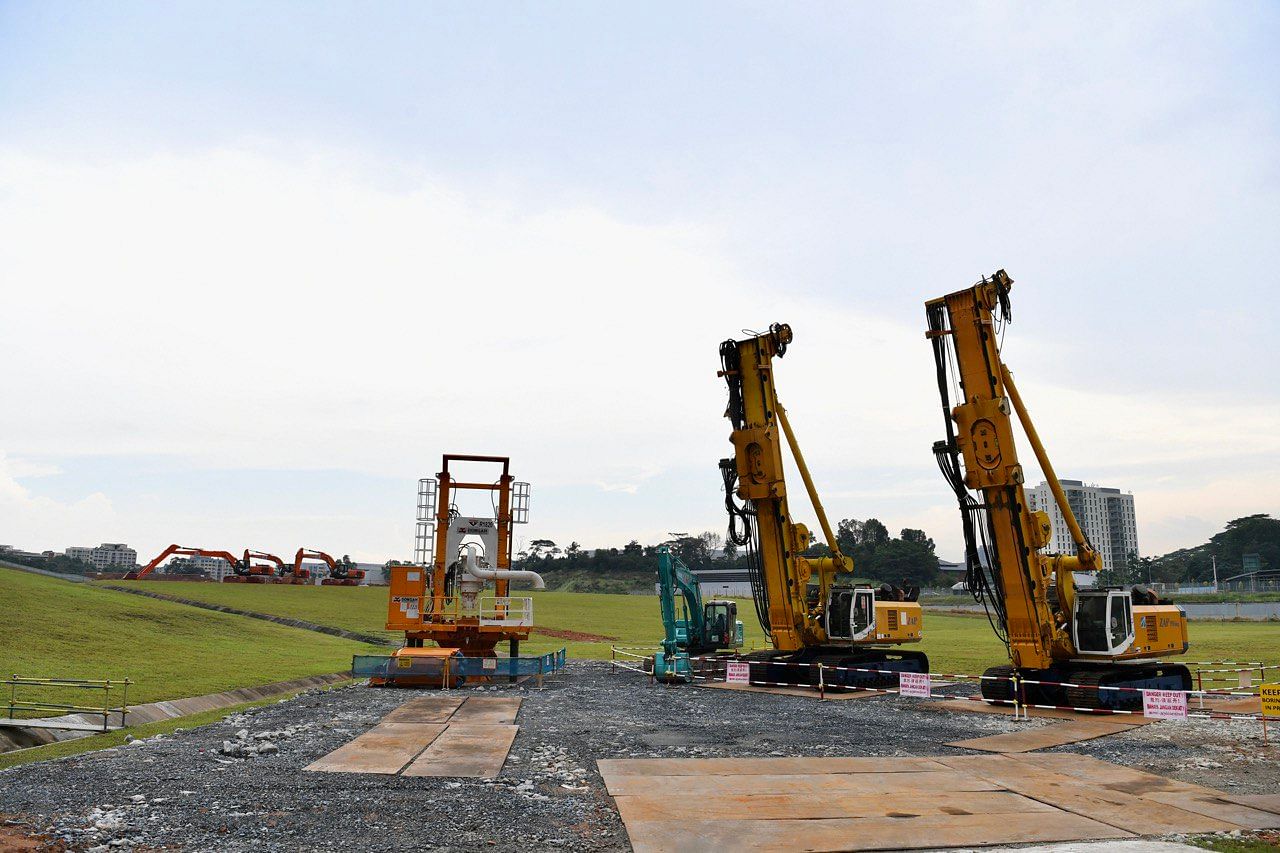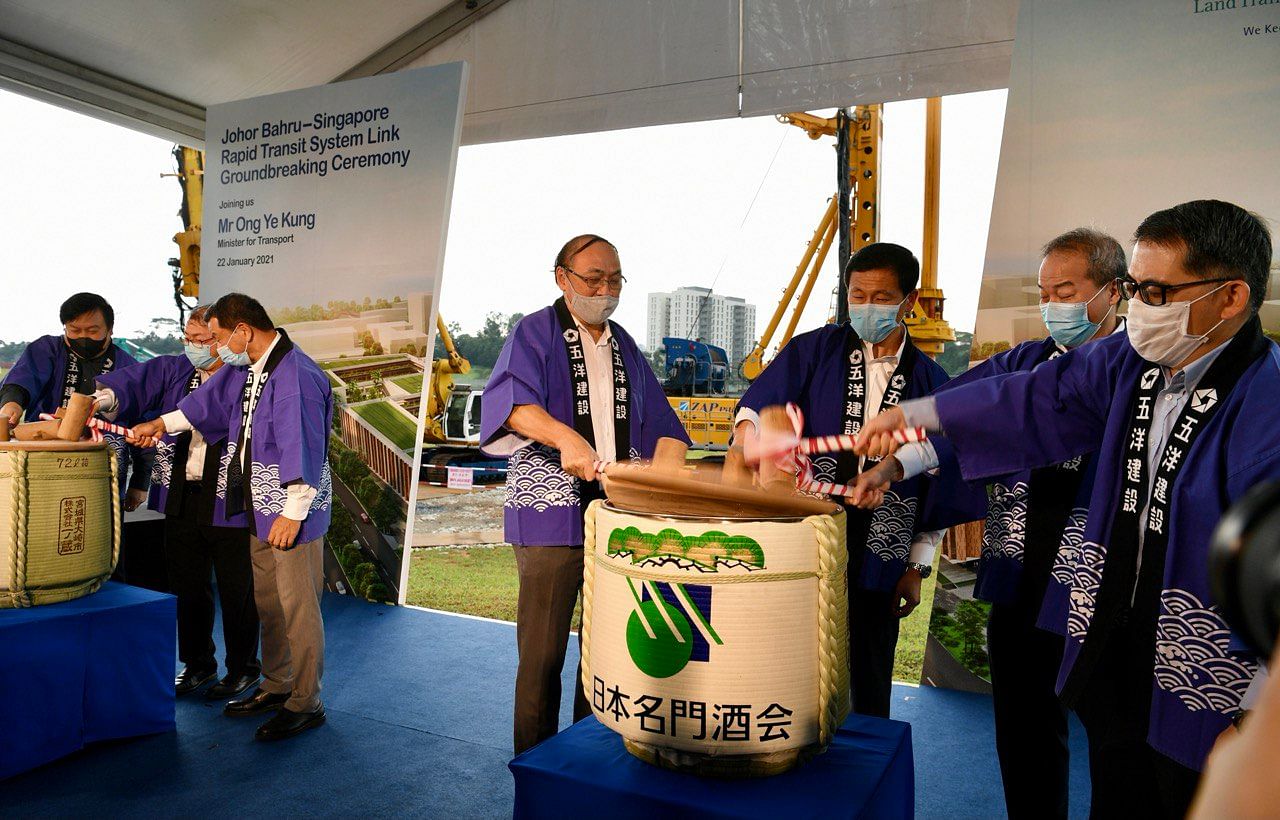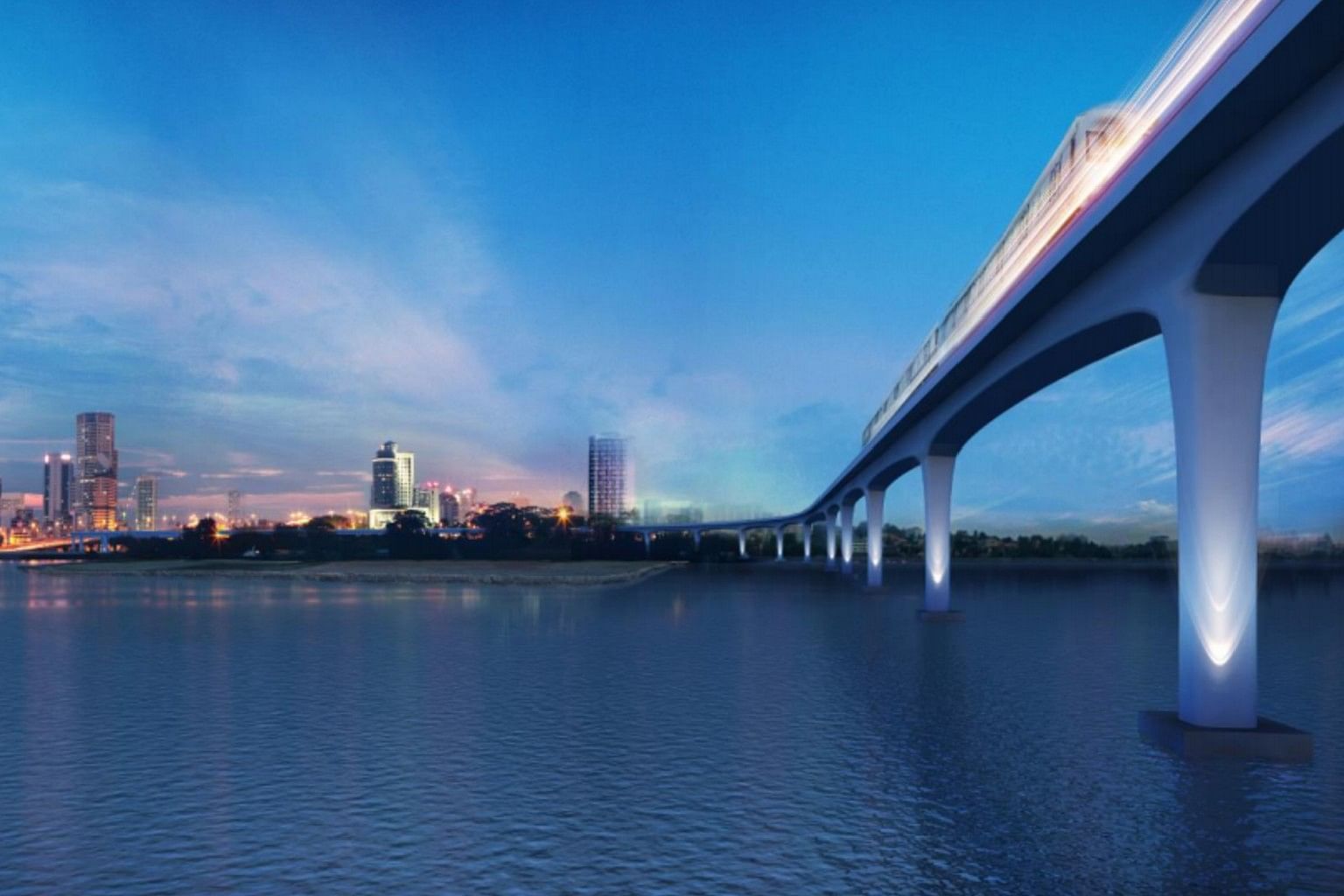Singapore-Johor RTS Link station and Customs building in Woodlands North to be 10 times the size of typical MRT station
Sign up now: Get ST's newsletters delivered to your inbox
Follow topic:
SINGAPORE - When the Rapid Transit System (RTS) Link starts running in end-2026, commuters crossing the border to Johor Baru via the line will be served by a terminus station and an immigration complex in Woodlands North about 10 times the size of a typical MRT station.
Built underground at a maximum depth of 28m, the Woodlands North RTS station will have three storeys, including two basement levels and an underground linkway to the Customs, Immigration and Quarantine (CIQ) building, and will be connected to the Thomson-East Coast Line (TEL) station via an underground concourse.
The rail link's tunnels will be connected to a 25m-tall viaduct spanning the Strait of Johor.
It will take about five minutes for commuters to reach Bukit Chagar station in Johor Baru, and the rail service can carry up to 10,000 passengers per hour in each direction.
The Land Transport Authority (LTA) unveiled these details on the 4km RTS Link at a ground-breaking ceremony on Friday (Jan 22) marking the start of construction work at the terminus station site in Woodlands.
Singapore and Malaysia had held a joint ceremony in July last year to mark the resumption of the cross-border line after the project was put on hold at Malaysia's request to review its scope, structure and costs.
Speaking at the ceremony on Friday, Transport Minister Ong Ye Kung said the resumption "was a significant milestone in strengthening and enhancing the connectivity of our peoples and the relations of the two countries".
He noted that Malaysia has broken ground for the project at the site of the future Bukit Chagar station in Johor Baru.
"I am glad to see both countries taking concrete action on the project and I am confident that we will work hard together to deliver the project on time, scheduled to be 2026. When the RTS Link is up and running, we will have an additional land linkage between Singapore and Malaysia," he said.
Construction at Bukit Chagar began in November last year and Malaysia started a three-month public inspection of the RTS Link project last week.
Calling it a game-changer in easing congestion on the Causeway, Mr Ong said that while the rail link is a short service, its economic and social benefits are significant.
The RTS Link stations will be integrated with the local transport networks, he said, and in Woodlands, there will eventually be a transport hub connected to the RTS Link and TEL stations.
"Taken together, these transport connections will support and enhance the larger development plans to transform Woodlands into a key growth hub and thriving employment gateway for the North Region, just like Jurong and Tampines," added Mr Ong.
"In the coming years, Woodlands will be revamped, revitalised and rejuvenated. There will be a new buzz here. And the RTS Link, when operational, will serve as a key gateway to these developments."
The journey between the two RTS Link stations will take about five minutes.

Photo of the actual site of the future RTS Link Station.
ST PHOTO: DESMOND FOO

The CIQ facilities for both Singapore and Malaysia will also be co-located at each station, meaning commuters have to clear immigration only once, at their point of departure.
First announced in 2010, the rail link project was initially targeted to be ready by 2018. A new starting date of end-2024 was agreed in 2017 and both countries signed a deal the following year, with construction due to start in 2019.
But the project stalled after the Pakatan Harapan government came to power in Malaysia, and it was suspended for six months at Malaysia's request to review its scope, structure and costs. The deadline to agree on new terms was extended four times before the project got back on track in July last year, one day before the final deadline.
Several key changes were made, including the use of a standalone light rail transit (LRT) system instead of the same trains and systems as the TEL.
The start of construction on the rail link comes after the Kuala Lumpur-Singapore high-speed rail project, which was also first announced in 2010, had ground to a halt.
Repeatedly postponed, the bilateral agreement was allowed to lapse on the final Dec 31, 2020 deadline, as neither government could agree on changes proposed by Putrajaya.
The proposed 350km rail line could have cut travelling time between Singapore and Kuala Lumpur to 90 minutes.

RTS Link viaduct.
PHOTO: LAND TRANSPORT AUTHORITY

